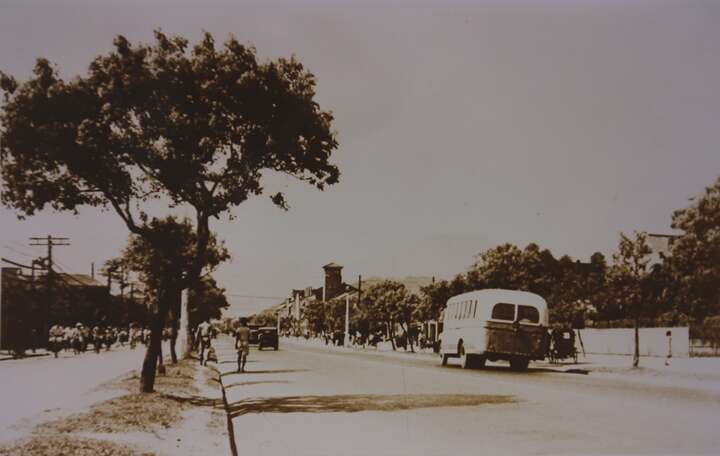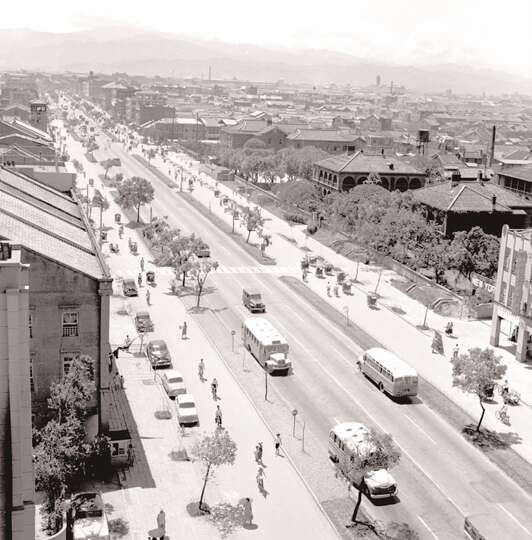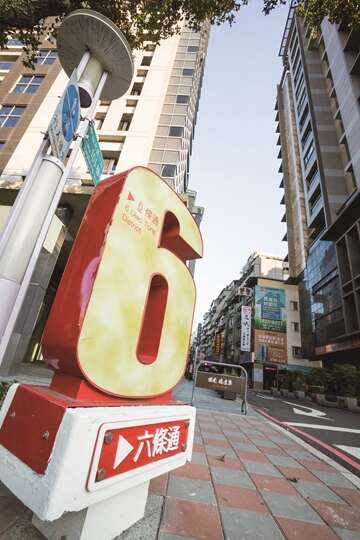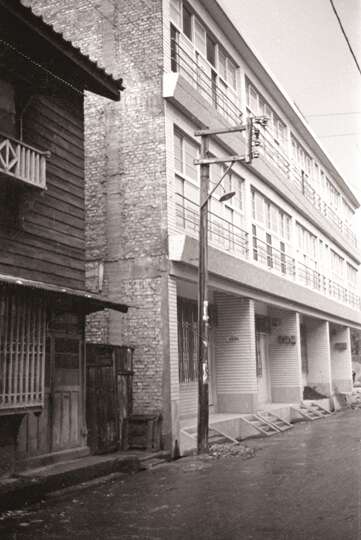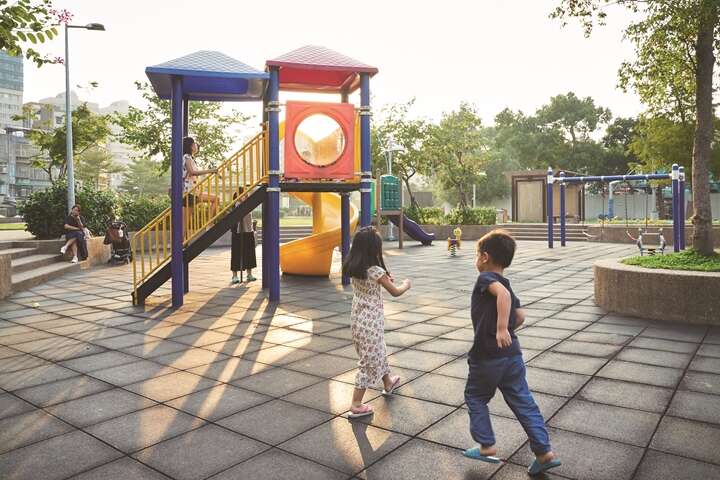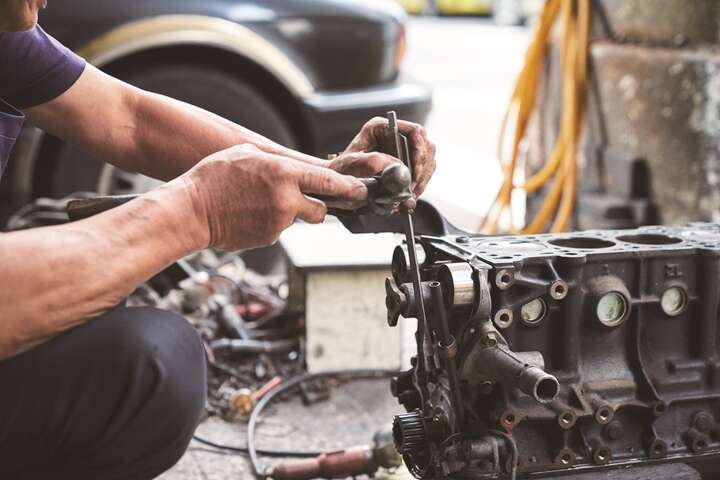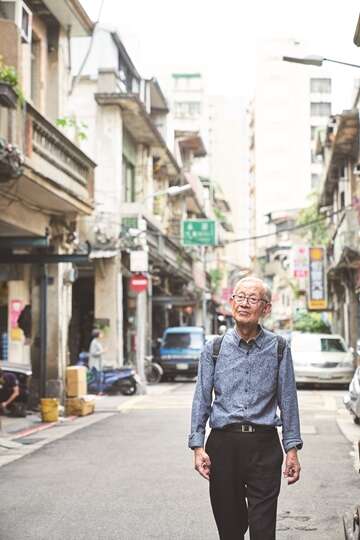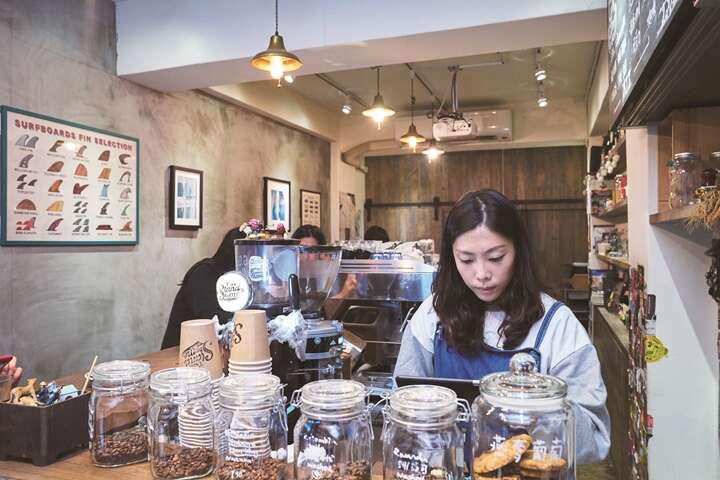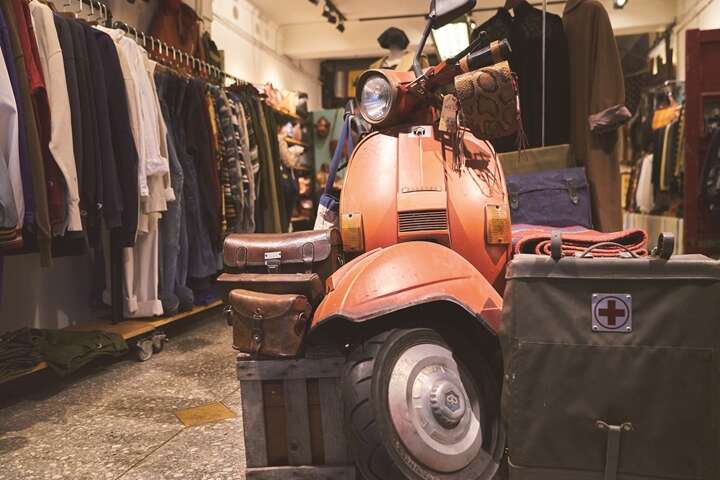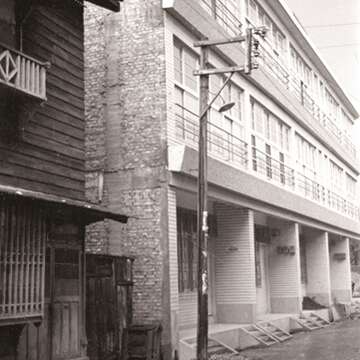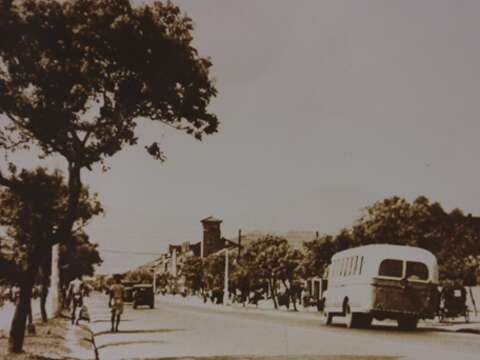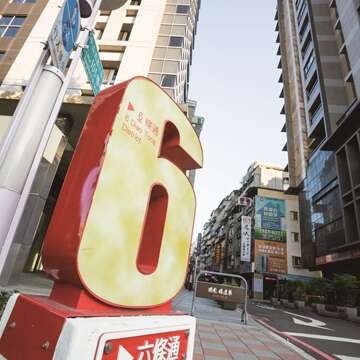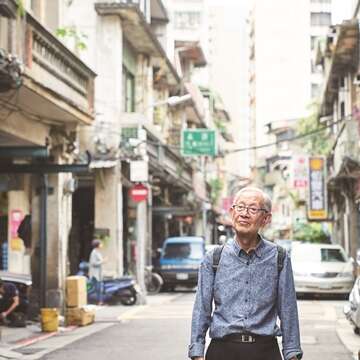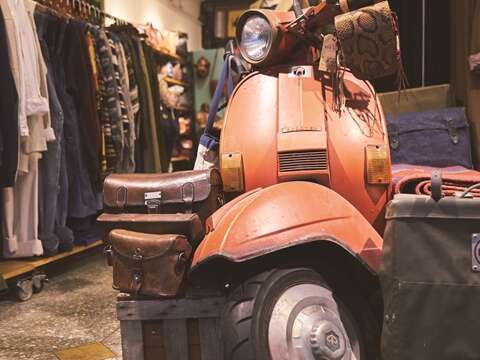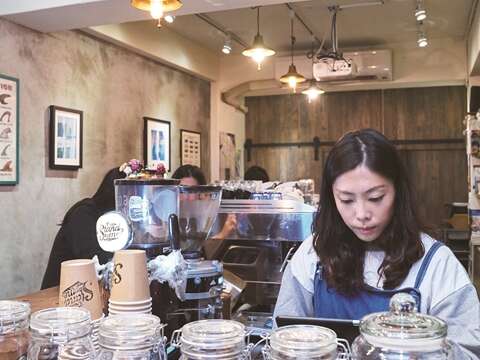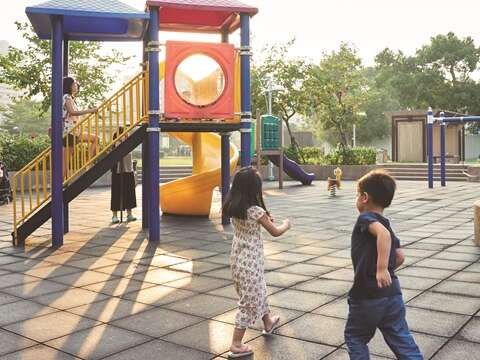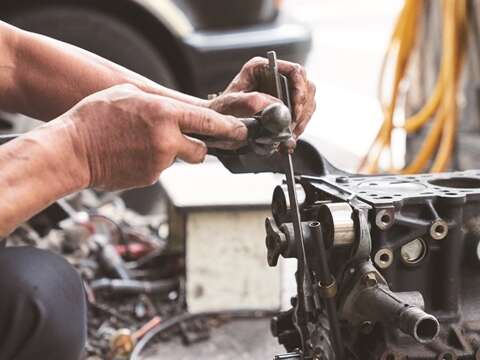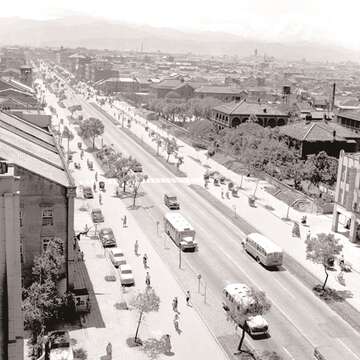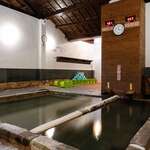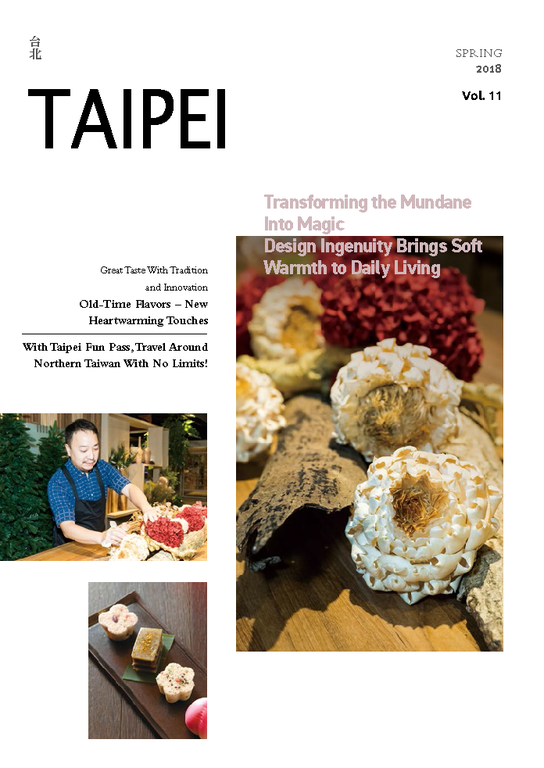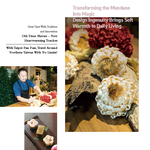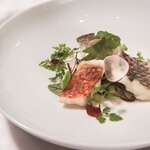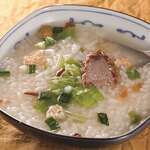Post date:2018-03-16
2266
Jodori Area Along Zhongshan N. Road & Chifeng Street – The Epitome of a Hardworking Community
Article |Gao Suiping
Photos |Huang Yufan, Liu Deyuan, Central News Agency, UDNdata, Taipei City Archives
▲Taipei’s most modernized road in 1957: Zhongshan North Road. (Photo: Taipei City Archives)
As the years passed by, Taipei’s backstreets adopted both old and new aspects, depending on which historical period or dominant culture had left its mark. The Jodori (條通; backstreet in Japanese) area along Zhongshan North Road (中山北路) has transcended its past as an elegant Japanese-style dormitory area, to become what it is now – a hustle and bustle business district flashing with neon lights! On Chifeng Street (赤峰街), old secondhand car parts stores and new hipster boutiques co-exist amidst the overflowing humanity. Strolling these timeless backstreets in the old town area, one can always find interesting stories and surprises.
▲The Jodori area in 1959. The old look no longer exists, but prosperity and a Japanese ambience have remained. (Photo: Central News Agency, Taipei Pictorial Issue 599)
Jodori Area Along Zhongshan N. Road –
A Tranquil High-End Residential Area in the Bustling City
During the Japanese era, in order to provide Royal Family members and their ambassadors easy access to Taiwan Grand Shrine, a new thoroughfare was built: Chokushi Road (敕使街道), now Sections 1 to 3, Zhongshan North Road. The wide and straight Section 1 is still one of the busiest routes in Taipei City. But when you walk into the backstreet area where it meets Nanjing East Road (南京東路), you’ll encounter a complete different atmosphere.
Encompassing Taiwan Sotokufu (台灣總督府; Office of the Governor-General), now Office of the President, and the nearby Taipei Imperial University (台北帝國大學), now National Taiwan University (NTU; 國立台灣大學), the area defined by the east side of Zhongshan North Road, west side of Xinsheng North Road (新生北路), south of Nanjing East Road, and north of Civic Boulevard (市民大道) was designated as a residential neighborhood for Japanese officials and renamed Taishocho District in the Taisho era. The dormitories here were each 265 to 330 square meters in size and built in the predominant Japanese style of the time, i.e. a high-end single-family wooden dwelling with a yard. Residents here were all important Japanese officials with no commoners to mingle among them – a luxurious and grand residential district indeed!
After the Restoration in 1945, the Japanese left, and some of these houses were taken over by Taiwanese. But with more and more people moving into this area, these single-family dwellings were gradually torn down and brick apartment buildings built to take in more families. When the economy recovered after the war, numerous stores selling qipao, or cheongsam, or imported goods were opened along Zhongshan North Road, and many banks chose this area to set up their branches. Situated in a good location, the Jodori area of Zhongshan North Road became the first choice of civil servants, lawyers and doctors. In the early evenings, every family lit a coal fire to prepare dinner, and the smoke rose from their chimneys. Young kids gathered along the side of Linsen North Road (林森北路) and Tianjin Street (天津街), which were just big ditches back then. They fished, played and laughed. All of this made for a vibrant scene welcoming people back to their warm, sweet homes after a long day at work.
When former president Chiang Ching-kuo (蔣經國) and his family first came to Taiwan, they resided at No. 18, Changan East Road (長安東路) until 1969. Later on, the house was torn down to facilitate road widening, so he and his family moved to Quihai House. The Chief of Zende Village (正得里), Wu-su Hsiusha (吳蘇秀霞) has been living in the Jodori area since 1966. According to her, with government administration offices nearby, this part of the Zhongshan North Road neighborhood is a good place to do business. Once the Japanese left after the war, Taiwanese started to move in, and the Jodori area became known as a place where everyone worked hard and lived a simple and stable life.
▲In the Japanese era, the Jodori area along Zhongshan North Road was a high-end residential district, and the name “Jodori” has been preserved. (Photo: Liu Deyuan)
Flashing Neon Lights Brighten Bustling Nights!
In the 1980s, Taiwan and Japan traded frequently, with many Japanese companies opening along Zhongshan North Road Sections 2 and 3. After a big “clean up” by the authorities, some restaurants that used to be located around Beitou hot springs moved to Jodori, so that they could continue serving Taiwanese and Japanese customers. When the lights came on in the evening, the whole Jodori area blossomed into the entertainment district that the Japanese loved most. In those back alleys were Japanese diners, Karaoke places, and eateries of all kinds. Tricycles were parked at the entrance to each alley, just waiting for customers to beckon. The whole neighborhood was crowded and bubbling with a lively atmosphere, which, in the memories of many, now serves as a miniature image of Taiwan’s golden age.
According to Wu-su, people often have a mistaken notion that with so many bars and restaurants, Jodori must have been a place where good and bad mingled, and safety concerns were an issue. However, in fact most businesses were willing to take part in community activities and got along with local residents. Their customers usually left before midnight, and never affected the daily lives of people there one bit.
Authentic Food Brings a Taste of Old Japan
Nowadays, most of the Jodori bars are closed, and the bustling nightlife is no longer to be found. Instead, ramen shops, eel houses and bistros have sprung up, providing authentic Japanese food for Taipeiers. This area has become a top choice for foodies, and proudly maintains its Japanese ambience in the old Jodori style.
One can wander along Zhongshan North Road, drinking in the tranquility of the Japanese era, while being fully present in the culture and energy of new-look Taiwan. The past century seems to be flowing by within your reach!
▲A street scene on Chifeng Street in 1964. In those days, buildings were mostly townhouse-style Japanese dormitories and Taiwanese bungalows. (Photo: UDNdata, Taipei Pictorial Issue 599)
Chifeng Street – From Poverty to Prosperity
Not far from Jodori along Zhongshan North Road is Chifeng Street. In the Japanese era, many officials lived here because it was close to government office buildings. Also, a lot of Taiwanese blue-collar workers dwelled here because it was close to Dadaocheng and Yenping North Road (延平北路). Many townhouse-style Japanese dormitories and Taiwanese bungalows were built on this street, as well as some two-story Western-style buildings for rich Taiwanese businessmen.
The first children’s amusement park in Taiwan was situated between Chifeng Street and Chengde Road (承德路) Section 2, where Jiancheng Park (建成公園) is now. It soon became a favorite playground for local kids. There was a candy factory at the corner of Nanjing West Road and Chifeng Street. The sweet aromas wafting through the air, mingling with youthful laughter softened the bitterness of trying to make a living in such a harsh environment.
Once the Japanese overlords left, Taiwanese took over the dormitory buildings on Chifeng Street. Local Taipeiers, as well as many laborers from other cities came and lived here, although conditions were cramped. National Taiwan University philosophy professor, Li Rizhang (李日章) lived on Chifeng Street in his childhood. He recalls that a single narrow brick Taiwanese bungalow housed eight families, and included students, teachers, civil servants, Blacksmith Street workers and women plying their trade at the bars along Zhongshan North Road. One could see all manner of life walking this tiny block.
With the post-war economic recovery, entertainment venues such as First Theater (第一劇場) and Da Chunhua Theater (大中華戲院) started appearing in the nearby neighborhood of Nanjing West Road and Yenping North Road. The sheer variety of stores and vendors energized the bustling lifestyle on Chifeng Street.
▲From the early days until now, Jiancheng Park has been a favorite children’s playground. (Photo: Huang Yufan)
Phai Thia Ge vs. Pha Thi Ge
About eighty years ago, Chengde Road was just a dusty thoroughfare without asphalt. It was nicknamed Pha Thi Ge (打鐵街), or “Blacksmith Street” in Taiwanese, because of all the smithies lining both sides. The backstreets of nearby Chifeng Street were home to many second-hand auto parts stores, so people called that neighborhood Phai Thia Ge (歹鐵仔街), Taiwanese for “Scrap Dealer Street”, as a play on Pha Thi Ge. Professor Li has noted that in the 1970s, Chengde Road was widened, and so some of the blacksmiths had to move to Chifeng Street’s back allies. This caused some confusion, and people still mistake Chifeng Street for the famous Pha Thi Ge.
Mr. Chen, the owner of Yuanda Auto Parts (元大汽車材料行) informs us, “Businesses on Phai Thia Ge now mainly retail secondhand auto parts imported from Europe, America and Japan. These places fix these parts and sell them mainly to repair garages. But many individual car owners come here to find parts as well.” Chen opened his shop on Chifeng Street in 1981. “At its peak period, business on Chifeng Street was great. Now it’s dropped by about 40%, yet these operators still insist on providing all kinds of mechanical parts along with professional skills. They are indeed one indispensable support of industrial development in Taiwan.”
▲Second-hand auto parts stores fill the backstreets of Chifeng Street, earning this section the nickname: Phai Thia Ge. (Photo: Huang Yufan)
Cultural and Creative Industries Generate Local Energy
Lately, the tranquil atmosphere of Chifeng Street has attracted businesses such as restaurants, clothing stores and purveyors of cultural and creative products. These new operations are bringing a new vitality into the backstreets of the Chifeng area.
Miss Lai, who owns a coffee shop on Chifeng Street Lane 41, notes that when she first started her business, there wasn’t much attention paid to culture and creativity here, but now, with its retro atmosphere filling the backstreets, and all those mechanics’ shops, Chifeng Street has discovered its own unique charm! The owner of a vintage and secondhand clothing store, Miss Zhan, used to have a place in Neihu. But then, noticing the relaxing atmosphere of Chifeng Street, and attracted by its cluster of businesses, she decided to relocate here and offer consumers the same practical and high-quality products. These old auto parts sellers and new retailers are taking care of each other, hoping to forge a prosperous future for Chifeng Street.
With its Japanese architecture, the pounding sounds of smithies’ anvils, its great variety of cultural and creative emporia, and the rich scent of coffee and books, Chifeng Street has a unique atmosphere formed by the melding of new and old industries. It is a place with many surprises that you just can’t miss in Taipei!
▲NTU philosophy professor, Li Rizhang spent his childhood on Chifeng Street. (Photo: Huang Yufan)
▲Various cultural and creative boutiques opened on Chifeng Street, mingling with the backstreet retro atmosphere, and spawning a unique local vitality. (Photo: Huang Yufan)
Gallery
Popular articles
 TAIPEI QUARTERLY 2018 SPRING Vol.11
TAIPEI QUARTERLY 2018 SPRING Vol.11 Walk, Think and Write Nojima Tsuyoshi Savors Taipei (TAIPEI QUARTERLY 2018 SPRING Vol.11)
Walk, Think and Write Nojima Tsuyoshi Savors Taipei (TAIPEI QUARTERLY 2018 SPRING Vol.11) Avid Explorer of Our Globe's Cultures Jasmine Huggins, Ambassador of Saint Christopher and Nevis to the Republic of China (Taiwan) (TAIPEI QUARTERLY 2018 SPRING Vol.11)
Avid Explorer of Our Globe's Cultures Jasmine Huggins, Ambassador of Saint Christopher and Nevis to the Republic of China (Taiwan) (TAIPEI QUARTERLY 2018 SPRING Vol.11) The Perfect Temperature Jewel Tsai's Elegant Homemade Banquet (TAIPEI QUARTERLY 2018 SPRING Vol.11)
The Perfect Temperature Jewel Tsai's Elegant Homemade Banquet (TAIPEI QUARTERLY 2018 SPRING Vol.11) Turning Local Ingredients Into an Amazing Feast Vincent Chen Pursues Original Flavors (TAIPEI QUARTERLY 2018 SPRING Vol.11)
Turning Local Ingredients Into an Amazing Feast Vincent Chen Pursues Original Flavors (TAIPEI QUARTERLY 2018 SPRING Vol.11) The Ideal Taiwanese Breakfast: Authentic Salty Congee (TAIPEI QUARTERLY 2018 SPRING Vol.11)
The Ideal Taiwanese Breakfast: Authentic Salty Congee (TAIPEI QUARTERLY 2018 SPRING Vol.11)
 Jodori Area Along Zhongshan N. Road & Chifeng Street – The Epitome of a Hardworking Community (TAIPEI QUARTERLY 2018 SPRING Vol.11)
Jodori Area Along Zhongshan N. Road & Chifeng Street – The Epitome of a Hardworking Community (TAIPEI QUARTERLY 2018 SPRING Vol.11)